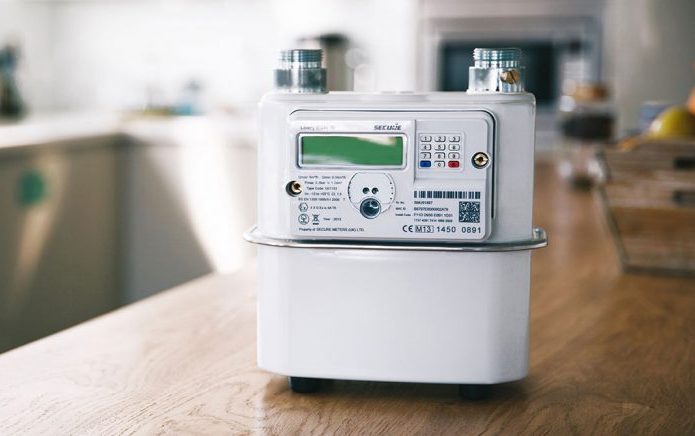“In roughly seven years, or around 2024, the population of India is expected to surpass that of China”, says 2017 Revision of World Population Prospects. Currently, the developing nation with a population of 1.324 billion, has an annual per capita electricity consumption of around 1,100KWh, compared to 12,071KWh of United States, or 2,674KWh of the whole world. As the third largest producer and fourth largest consumer of electricity grow into a developed and the most populated nation, its electricity needs are going to grow exponentially.
Yet, the fledgling Indian Electricity Distribution Companies [DISCOMs] had raked up a debt of Rs. 3.95 lakh crores by September 30, 2015. These companies continue to rely on government bailout packages to remain operational. The looming energy crisis is quite apparent.
For years, DISCOMs have been incurring debts because of
- Electricity theft
- Lack of energy accounting
- Faulty energy accounting
- Promises of Free Power
Electricity theft can take place in many ways, such as bypassing the meter, directly tapping the line and tampering with the existing energy meter.
Lack of energy accounting leads to losses when the electricity supplied is not even metered. This problem may be a direct result of energy theft.
Faulty energy accounting may be caused by a genuine human error while taking the meter reading or by the rot of corruption in DISCOMs.
In the heat of elections, political parties do not hesitate to promise free power to the voters putting further strain on the distribution companies. Electricity is a hot-button issue and any attempt by the power companies to hike the tariffs is met with significant backlash and possible ousting of ruling party in the next elections.
All these factors render DISCOMs unable to buy power without accruing significant arrears.
Adding insult to injury is the Indian Grid’s inability to meet peak power consumption, leading to frequent planned and unplanned power cuts. The truth of the matter is that we simply lack the tools to deal with the challenges of today, much less the trials of tomorrow.
The country needs a substantial upgrade in the power distribution infrastructure which will not only improve the efficiency of the existing systems but also pave the way to adequately match the supply to demand.
It is in this context that smart grid gains paramount importance.
A smart grid, simply put, is a concept that ensures adequate control of the production and distribution of electricity. At the core of this concept and vital to its functioning is a Smart Meter. A smart meter is a device that measures the consumption of electricity and communicates the readings remotely to the utility [DISCOMs]. Based on the data collected, the utility can take necessary actions to address the issues that lead to loss of revenue. A smart meter differs from a traditional energy meter in that there is a two-way communication between the utility and the energy meter. The communication can take place over a wired [RS232, RS485, power line communication etc.] or a wireless protocol [Zigbee, 6LowPAN, WiFi, Sigfox, LORA, LTE etc].
Let’s take a peek under the hood of a smart meter to further understand its functioning. The following is generic block diagram readily available on www.ti.com.
Any household energy meter is usually powered by AC mains. The AC power supply, after passing through a full bridge rectifier, can be given to a PWM controller to convert the rectified AC to pulsed DC. This DC voltage can be further stepped down based on the power requirements of other subsystems. Additionally, energy meters can have battery charging circuitry to power the meter when the mains fail. All these power supplies can be simulated very easily using online tools such as Webench available for free. Texas Instruments has a rich library of subsystem designs which can be very useful to readers; these designs are available online with schematics, BOM and test results. One such TI design which can be of interest to readers working on smart meter designs is PMP30276( 440VAC Input Tampering Protected Valley Switching Flyback Reference Design)- http://www.ti.com/tool/PMP30276.
In case the reader wants to look at all TI designs for smart meters; they can simply go to the TI Design library and choose smart meter as the end application. There are 51 designs on the TI website which fall into this category and there are multiple other designs for power supplies etc.
The metrology block is the heart of energy meter. The analog front end comprising current sensor, protection and filter circuitry, samples the current and voltage for each phase of the mains and after required conditioning, sends it to the ADC. Based on the system specs, the ADC can be an external device or inbuilt into the MCU. For example, MSP430F67791A from Texas Instruments has an internal 24-bit sigma delta ADC, sufficient for most household energy metering requirements.
The communication block is used to communicate the meter readings and commands through a wired or wireless connection. Wired communication may include passing messages using RS232 or RS485. Alternately, the meter may send signals over the power line itself using power line communication technology.
Wireless communication can take place over sub 1GHz bands or 2.4GHz bands. The meter may use Bluetooth, BLE, Zigbee, 6LowPAN, WiFi to connect to the centralized data aggregation system.
The communication block and the application block are what separate a traditional energy meter from a Smart Meter. The application block has the relay drivers that can drive relays to connect or disconnect the electricity supply to the house. This subsystem receives the command through the communication blocks, enabling DISCOM to remotely connect or disconnect the electricity supply.
The data collected by the smart meter is processed in a centralized system and can be used to detect electricity theft. The neural nets trained on the data can take into account the unusually high current being drawn because of unauthorized line taps. Any attempt to bypass the meter can be discouraged by remotely disconnecting the electricity supply and imposing fines before restoring the supply. The DESCOM representative doesn’t have to visit the site to take reading or to disconnect the meter, thus saving both time and effort.
As the entire reading process is automated, the chances of human error are reduced. Moreover, the utility saves money on salaries that would have been paid to employees responsible for visiting subscribers and manually taking readings.
The AI models can find power consumption patterns of a particular area. The utility, using machine learning algorithms, can accurately predict the electricity demand at a given time of the day or in a given month of the year. This prediction can ensure that the peak power demands are met. Moreover, variable tariffs can be imposed based on the power consumption of the grid. For example, the utility can charge more money when the demand is high. This discourages unnecessary usage of power during peak hours, thereby not only reducing the pressure on the grid but also providing a much-needed increase in the net earnings to DISCOMs. Also, this solution may be more palatable to the Indian voter than a blanket increase in the tariffs.
A centralized automated system enables real-time reactions to any fluctuations in the grid. Moreover, this advanced metering infrastructure with smart meter at its core has the potential to cut the losses incurred by the DISCOMs and to improve the energy efficiency of the grid. By introducing an element of proactivity, predictability and order in what is at times an unmanaged and volatile system, this infrastructure presents itself as a backbone on which may rest the future of energy needs of the Indian population.

Technical Sales Representative,
Texas Instruments India,
Sales and Applications

Technical Sales Engineer,
TI India.








